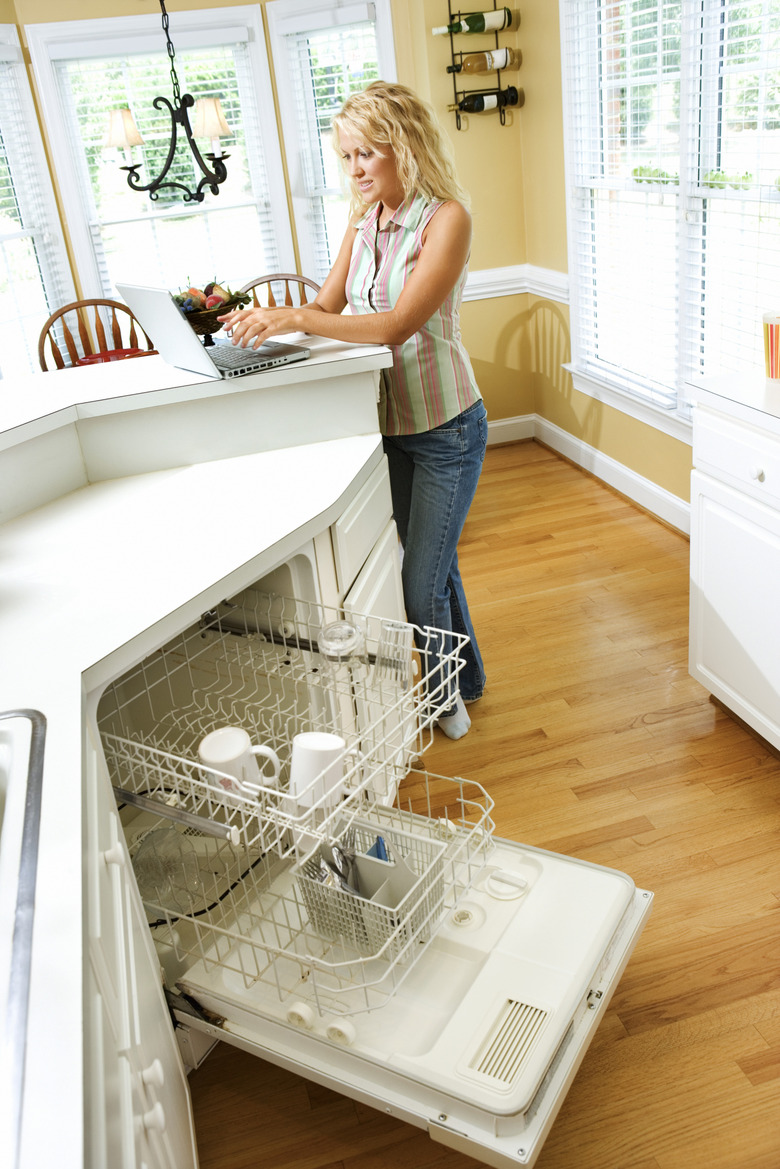Problems With Condensation From A Dishwasher
Condensation problems emanating from a dishwasher can cause damage to cabinets and make storing dry food around your appliance impossible. Depending on the type of cabinetry and counter material, condensation issues from a dishwasher can range from mild annoyances to serious water problems. There are a number of issues that can contribute to condensation build-up from a dishwasher, and a few things you can do to alleviate the situation.
Stone Counters
Stone Counters
If your counter tops are made of a stone material, such as granite or marble, you will want to be on the lookout for condensation accumulation directly above the dishwasher door. If a small gap is not left between the top of the dishwasher and the lip of the counter, condensation can accumulate during the drying cycle. The cold stone accumulates moisture as the dishwasher vents, leading to water damage in front of your dishwasher.
Dishwasher Positioning
Dishwasher Positioning
Dishwashers vent their condensation through a vent located at the top of the unit, just above the door. If a dishwasher is installed in such a way that the counter top obstructs this vent, or redirects emerging water vapor under your cabinets, you are bound to have issues with condensation. Slide your dishwasher out a few inches, so the counter no longer blocks the vent. Run the unit and see if your condensation problem is solved.
Condensation on the Outside of the Door
Condensation on the Outside of the Door
Condensation on the outside of the dishwasher door indicates a problem with the seals or insulation. A leaking soap dispenser on a dishwasher door can cause heat to leak inside the door, and cause condensation buildup on the outside of the door. Check your soap dispenser for signs of damage or a leak.
Normal Condensation
Normal Condensation
All dishwashers will create some condensation. If installed properly, the drying cycle should vent the water vapor from the drying dishes through the top of the dishwasher door. The front of the unit may become slightly moist, but that should be the extent of it. Any additional condensation, either on the unit or in the cabinets, indicates an improperly installed dishwasher or a leaking seal. An authorized service center for your particular make and model unit should be contacted.
